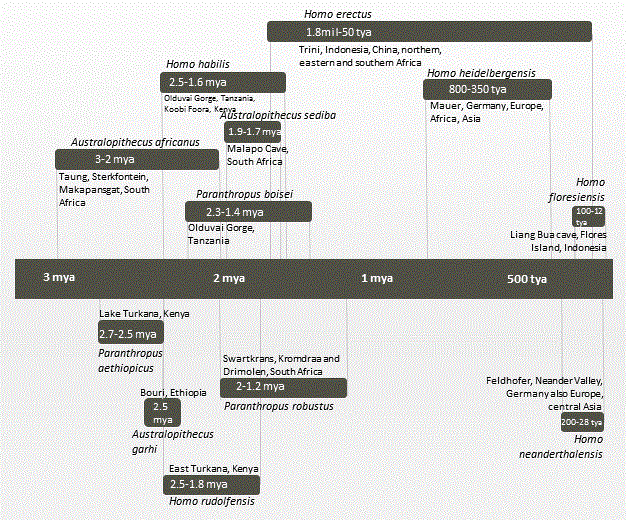|
Postcanine Megadontia
Post-canine megadontia is a relative enlargement of the molars and premolars compared to the size of the incisors and canines. This phenomenon is seen in some early hominid ancestors such as '' Paranthropus aethiopicus.'' Archaeological evidence The evidence for post-canine megadontia comes from measuring post-canine tooth surface area of hominid specimens and comparing these measurements to other hominid species. '' Australopithecus'', dated to have lived 2 to 3 million years ago, is the earliest hominid genus to demonstrate post-canine enlargement, with average post-canine tooth area ranging from approximately 460mm2 and going all the way up to the largest tooth area, 756mm2, which is seen in ''Paranthropus boisei'' . After ''Australopithecus'', a trend of steady decline in post-canine size is observed, starting in the genus ''Homo'' and culminating with '' Homo sapiens'' which has an average post-canine tooth area of only 334mm2. Studies of premolar size in hominid species ... [...More Info...] [...Related Items...] OR: [Wikipedia] [Google] [Baidu] |
Paranthropus Boisei
''Paranthropus boisei'' is a species of australopithecine from the Early Pleistocene of East Africa about 2.5 to 1.15 million years ago. The holotype specimen, OH 5, was discovered by palaeoanthropologist Mary Leakey in 1959, and described by her husband Louis a month later. It was originally placed into its own genus as "''Zinjanthropus boisei''", but is now relegated to ''Paranthropus'' along with other robust australopithecines. However, it is also argued that ''Paranthropus'' is an invalid grouping and synonymous with ''Australopithecus'', so the species is also often classified as ''Australopithecus boisei''. Robust australopithecines are characterised by heavily built skulls capable of producing high stresses and bite forces, and some of the largest molars with the thickest enamel of any known ape. ''P. boisei'' is the most robust of this group. Brain size was about , similar to other australopithecines. Some skulls are markedly smaller than others, which is taken as evi ... [...More Info...] [...Related Items...] OR: [Wikipedia] [Google] [Baidu] |

